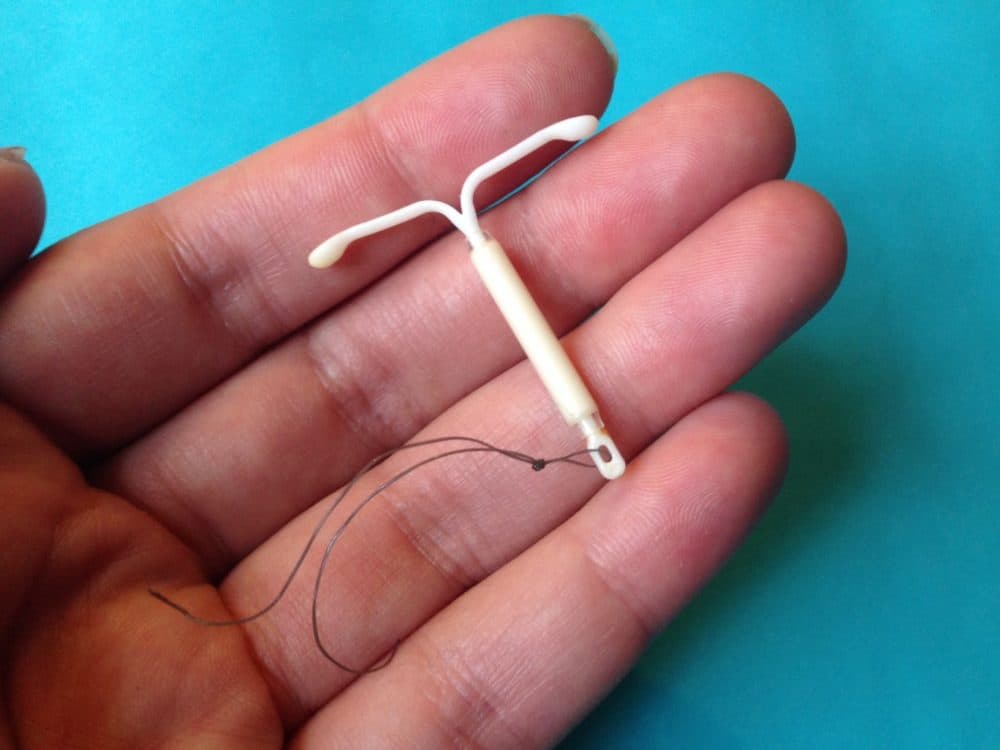Advertisement
More Than 20,000 Women Rushed To Get IUDs Right After Trump Elected, Study Finds

Girlfriends exhorted each other on social media to get that IUD while it was still free. Here in Massachusetts, Planned Parenthood clinics reported a dramatic spike in IUD demand, from about three per day to closer to 50.
Just after President Trump was elected in 2016, there was a reported rush on IUDs and contraceptive implants by women worried that the new administration could eliminate the coverage for long-acting birth control mandated by Obamacare.
But just how big a phenomenon was that "Trump bump" in IUD demand? A new national study based on records of more than 6 million commercially insured women calculates that in the month following the election, the daily rate of IUD and implant insertions averaged nearly 22 percent higher than the year before — totaling more than 20,000 additional women in 2016, 700 women a day.
An edited Q&A with the study's lead author, Dr. Lydia Pace of Brigham and Women's Hospital:
How would you sum up what you found?
After the election, several health organizations and the media reported an increase in women's use of IUDs, and attributed that increase to the election itself. We were interested in understanding whether that trend was real. So we did an analysis in a large insurance claims database that included privately insured women from around the country.
We found that the election was indeed associated with an increase in IUD and implant insertions above and beyond the number of insertions that we'd expect, based on seasonal and preexisting trends.
By how much?
Extrapolating our findings to the larger population of over 30 million privately insured women in the U.S., we found that the election was associated with 700 additional insertions per day during the 30 days post election, which amounts to 21,000 additional IUD and implant insertions over those 30 days.
How did you calculate it?
We statistically compared rates of IUD and implant insertions before and after November 8, 2016 with the trend over the same time period in 2015. This allowed us to isolate the effect of the election apart from seasonal fluctuations in contraceptive use, which we know happen, and also apart from the gradual rise in IUD and implant use that we've seen in the U.S. over the past 10 years.
Were these women who would have gotten them anyway, but just rushed that month?
Unfortunately, our study and the data that we had don't allow us to determine whether women who got IUDs and implants during the 30 days following the 2016 election would not have gotten them at all had the election not occurred.
What do you see as the biggest takeaways?
Our study suggests that women's contraceptive decision-making is indeed influenced by political events, including concerns about losing contraceptive coverage in particular, or insurance coverage in general. Our study also underscores that many privately insured women really value the contraceptive coverage that was and is provided by the Affordable Care Act. I think that's an important message both for the public and for policymakers.
What would you expect to see in 2017 data?
There was a piece by the health IT company Athena Health that came out in mid- 2017, and the authors noted that the initial uptick that they had seen in IUD use in their network had not been sustained. That’s consistent with what I would expect to see as well.
This is partly because one would assume that many women who had been thinking about an IUD or an implant before the election may have been incentivized to get it quickly after the election. But during 2017, they would have already had that device placed so they don't need another one, since these methods can be kept in place for years.
So we may have saturated the interested population, but it will be interesting to look forward through 2017 and beyond, and see whether other political events continue to influence contraceptive decision making and how trends evolve.
Have we ever seen a contraceptive spike like this one before?
We certainly have seen dramatic swings in birth control based on other factors, like increased availability of certain methods, and changing attitudes about certain kinds of birth control. But I'm not aware of another political event that's had comparable impact, though I'd be really interested to know if there has been one.
